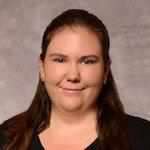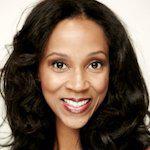Women Breaking Barriers in Wealth Management
OnlineEducation.com interviewed five exceptional financial advisors and wealth managers. These role models shared how they got into the business; what it feels like to be a woman in a male-dominated industry; and their advice for people aspiring to join this high-growth field.
 Grace ApuyGrace Apuy is a senior wealth advisor and SVP at Kayne Anderson Rudnick, a boutique investment advisory firm with offices in San Francisco and Los Angeles. Prior to joining Kayne, she served as an account executive at Fidelity Investments, where she offered advice on asset allocation, tax planning, estate planning, and other areas.
Grace ApuyGrace Apuy is a senior wealth advisor and SVP at Kayne Anderson Rudnick, a boutique investment advisory firm with offices in San Francisco and Los Angeles. Prior to joining Kayne, she served as an account executive at Fidelity Investments, where she offered advice on asset allocation, tax planning, estate planning, and other areas.
 Lin Buencamino Lin Buencamino is a financial representative at CUSO Financial Services and Redwood Credit Union. Before joining CUSO, she worked as a private client banker with JPMorgan Chase for 14 years. Notably, she speaks three languages—English, Spanish, and Tagalog—and has a bachelor’s degree from Sonoma State University.
Lin Buencamino Lin Buencamino is a financial representative at CUSO Financial Services and Redwood Credit Union. Before joining CUSO, she worked as a private client banker with JPMorgan Chase for 14 years. Notably, she speaks three languages—English, Spanish, and Tagalog—and has a bachelor’s degree from Sonoma State University.
 Erica Joy Erica Joy is an independent financial services professional licensed by the MassMutual Financial Group in Northern California. Her areas of expertise include financial advising, wealth management, and insurance. Prior to working full-time in financial services, she was a student teaching assistant in Cal Poly’s Orfalea College of Business.
Erica Joy Erica Joy is an independent financial services professional licensed by the MassMutual Financial Group in Northern California. Her areas of expertise include financial advising, wealth management, and insurance. Prior to working full-time in financial services, she was a student teaching assistant in Cal Poly’s Orfalea College of Business.
 Christine Le Christine Le is a wealth advisor at Kayne Anderson Rudnick. She has more than a decade of experience in financial services. She’s a dual-certified professional, who holds both the CFP® (Certified Financial Planner™) and CTFA (Certified Trust and Financial Advisor) credentials. At Kayne, she strives to help individuals and families create customized plans for their financial futures.
Christine Le Christine Le is a wealth advisor at Kayne Anderson Rudnick. She has more than a decade of experience in financial services. She’s a dual-certified professional, who holds both the CFP® (Certified Financial Planner™) and CTFA (Certified Trust and Financial Advisor) credentials. At Kayne, she strives to help individuals and families create customized plans for their financial futures.
 Robin Patin Robin Patin is a financial advisor for businesses and professionals at Edward Jones, where she especially enjoys helping retirees, women, and people undergoing major life transitions to build wealth. Formerly, Ms. Patin worked as the director of business development for the Anita Borg Institute for Women in Technology and served as a project manager with the European Commission, as well.
Robin Patin Robin Patin is a financial advisor for businesses and professionals at Edward Jones, where she especially enjoys helping retirees, women, and people undergoing major life transitions to build wealth. Formerly, Ms. Patin worked as the director of business development for the Anita Borg Institute for Women in Technology and served as a project manager with the European Commission, as well.
Where Are the Women in Wealth Management?
“What I’ve learned is that when one is part of the minority, there’s more pressure to have to prove oneself worthy of belonging to the group.” (Lin Buencamino)
It’s no secret that the wealth management profession is largely “pale, male, and stale.” Women represent 50.8 percent of the U.S. population, yet they comprise a small fraction of financial advisors across the country. According to Cerulli, 15.7 percent of U.S. personal financial advisors are women, while the Bureau of Labor Statistics put the figure at 31.6 percent. The discrepancies are even larger for people of color and Millenials. This profession is overwhelmingly white and the largest generational cohort—nearly 25 percent—falls between ages 50 and 59. Even though all five interviewees acknowledged that they didn’t look like typical wealth managers, most of them viewed their uniqueness as an opportunity rather than an impediment in their careers.
There’s evidence that changes in the industry may actually favor women in coming years. In fact, the Department of Labor’s Fiduciary Rule was supposed to go into effect in June 2017, making financial advisors legally liable for the advice they provide. In other words, financial advisors must act in the best interests of their clients. For wealth managers who follow a purely commission-based model, this rule will have a tremendous impact. By illustration, Ms. Patin pointed out, “In wealth management and financial services, some companies are purely commission-based and basically you earn whatever you sell. The industry is starting to move away from that because there were a lot of problems with that model.” Furthermore, Ms. Joy observed that men were more likely to engage in a sales-oriented, transactional approach: “A lot of the guys that I know in the industry are asking over the cubicle wall, ‘How much commission does this sale make?’ You don’t see women doing that very much. They’re more likely to ask clients, ‘What do you think is the best fit for you?’” While the Trump administration has delayed full implementation of the rule, it’s expected to be enforced in coming years.
Interestingly, many men have profited handsomely off of the transactional approach. In fact, “personal financial advisors” suffer the largest gender wage gap of any U.S. occupation. The Institute for Women’s Policy Research (April 2017) reported that women in this line of work earn only 55.6 percent of men’s median weekly earnings—a figure which makes “72 cents on the dollar” look generous.
Despite the stubborn pay disparity, nearly all of the interviewees remained optimistic about the future of the profession. Ms. Patin stated memorably, “I think over the next 10 to 20 years, [the gender wage gap] is going to change radically because we’re moving away from commission-based and toward fee-based accounts”—an approach which favors financial advisors who strive to maintain long-term relationships, take less risks, and garner client trust. And guess who’s better at the “nurturing competencies”—the hard work of building and maintaining relationships? Not surprisingly, it’s women.
All of the interviewees stressed the importance of cultivating strong, interpersonal connections in their careers. Ms. Buencamino commented, “This is a relational business based on trust…Know how to listen; be honest, confident, and fair, and always do the right thing.” Ms. Joy echoed this sentiment, noting, “Most of the women in the business I know prefer relational, referral-based business; that’s how they build their client base. They’re much more about doing things for the clients rather than leeching all they can out of them.” Similarly, Ms. Patin reflected that, “Knowing about money is one piece, but being a good person and helping people reach their financial goals is what makes you an outstanding financial advisor.”
And the future Fiduciary Rule isn’t the only good news: women now control approximately 51 percent—$14 billion—of personal wealth in the U.S., which is expected to reach $22 billion by 2020. They’re also the primary breadwinners in more than 40 percent of American households, nearly a four-fold increase since 1960. With women controlling a growing share of wealth coupled with the evidence that a majority would prefer a female financial advisor, “the streets are potentially paved with gold,” Ms. Patin remarked.
Through the insights and advice of these five exceptional women in the industry, It’s clear that in wealth management, the future is female.
Barriers to Women Working in Wealth Management
“I don’t want to generalize, but many women believe that we should only get something if we’ve already earned it, whereas men concentrate on their potential and ask for raises according to that future potential.” (Grace Apuy)
Paying thought to their extensive experience in the industry, Grace Apuy, Lin Buencamino, Erica Joy, Christine Le, and Robin Patin shared why they believe women are underrepresented in wealth management.
WEALTH MANAGEMENT: BARRIERS TO ENTRY
- Men in power favor people who look like them.
- Women, people of color, and Millennials don’t look like “typical” financial advisors.
- Women face harsher punishments than men for financial misconduct.
- Women aren’t always raised to be confident self-advocates; most men are.
- Women still aren’t treated with as much professional respect as men.
Men in power favor people who look like them. Hannah Riley Bowles, a public policy professor at Harvard University, found that powerful men prefer people who look like them (note: content may be paywalled) and may make hiring or promotions decisions accordingly. Also, Lauren Rivera, a Kellogg School of Management professor, found that hiring managers want recruits who have the potential to be their friends—a problem if a profession is dominated by aging, white men. Ms. Apuy acknowledged this trend, stating, “I think it’s natural for people to want to be with people that look like them…It can be intimidating going into an industry where you don’t see other successful women and people of color.” Ms. Joy pointed out that the bias extends to other opportunities as well, observing “A lot of boys clubs tend to share business amongst themselves.” Perhaps this is one reason why there were only nine women among Barron’s “top 100 independent wealth advisors” in 2017.
Women, people of color, and Millennials don’t look like “typical” financial advisors. Related to the above is the stereotype of who manages wealth. Several of the interviewees shared that they simply don’t fit people’s image of the profession. Ms. Patin revealed, “People have this image in their minds about what a wealth manager should look like—a white guy in a suit and a tie.” In the same vein, Ms. Buencamino mentioned, “I don’t look like the ‘average’ financial advisor. Because of this, I find myself having to demonstrate and elaborate my skills and abilities, maybe more so than my counterparts who fit the more traditional look.”
Women face harsher punishments than men for financial misconduct. Perhaps most alarmingly, even though male wealth advisors were more likely to commit misconduct than their female peers, women were 20 percent more likely to be fired for wrongdoing and 30 percent less likely to find jobs than men guilty of misdeeds. Furthermore, men’s financial missteps were an average of three times more costly than women’s. “When Harry Fired Sally: The Double Standard in Punishing Misconduct” was published in the National Bureau of Economic Research and was based on data from 1.2 million registered financial advisors in the U.S.
Women aren’t always raised to be confident self-advocates; most men are. In finance, it’s said that confidence is the great elixir. Relative to men, fewer women are raised with traits associated with success in the industry: assertiveness, persistence, and self-possession. Ms. Le hit the nail on the head: “As a woman, you’re seen as tiptoeing and not wanting to cause tension, wanting to keep things calm and peaceful, approaching things without causing discomfort to others.” Ms. Apuy shared an anecdote which illustrated the difference between men and women’s self-assuredness in asking for a raise: “I talked to a gentleman I was working with, the managing director…I was going to ask for a raise and he told me to double that. That’s the difference.”
Women still aren’t treated with as much professional respect as men. While the discrimination is rarely flagrant, most women are acutely aware of how they’re treated differently than men. Ms. Patin revealed the all-too-common scenario where she wasn’t taken as seriously in a work setting due to her gender: “I was working at a business development strategic partnership and I would go into a meeting with a man. I was the more senior person and the company that we were talking to would direct everything toward the junior man, maintaining eye contact with him.”
Advice for Women in Wealth Management
“One of the things that’s very interesting about working as a financial advisor is that it’s a career that you age into—it’s not a career that you age out of.” (Robin Patin)
The five interviewees also offered advice and encouragement for women aspiring to work in wealth management.
ADVICE FOR ASPIRING WEALTH MANAGERS
- Embrace bringing your unique perspective to the table.
- Seek out accomplished mentors.
- Act as if there were no glass ceiling.
- Give back—in the office and externally.
- Find the right firm.
- Talk to someone similar to yourself in your company of interest.
- Large company or boutique firm? There’s no one-size-fits-all.
- Realize that opportunities are ripe in wealth management.
- Consider the CFP credential.
Embrace bringing your unique perspective to the table. Despite the glaring wage gap and current demographics of the industry, a majority of the interviewees remained optimistic about the future of female financial advisors. Not only are women more likely to exhibit traits such as patience, empathy, risk aversion, and a proclivity to built relationships—four major contributors to success in this field—but also their ability to bring a unique perspective to the table can help grow a business by attracting a broader swath of clients. As Ms. Patin rightly points out, “There’s a lot of emotion and insecurity about money. When you see a wealth manager or financial advisor, you need to lay out all your cards on the table.” Overall, firms with greater diversity are likely to be more nimble, adaptive, and appealing to investors of various backgrounds.
Seek out accomplished mentors. Not surprisingly, learning directly from someone with extensive experience in the business can be crucial to one’s success. Ms. Apuy spoke glowingly about her mentor in Los Angeles, Spuds Powell, who notably ranked first on Barron’s 2017 top 100 list of independent advisors. She’d have discussions with him during long car rides as they’d travel to client sites all over Southern California. And as Ms. Le mentioned: “Don’t be afraid to ask for people’s time.” Good fortune in mentoring favors the bold.
Act as if there were no glass ceiling. As with previous Women Breaking Barriers stories, females who excel in male-dominated fields often don’t see (or ignore) the unique obstacles women face. Ms. Apuy noted that this may extend to cultural differences as well. Growing up with Korean parents, she said, “I was raised to be quiet, put my head down, work really hard, and not bring attention to myself. Corporate America is the complete opposite. You need to speak up; you need to raise your hand; you need to keep your hand raised if you want to make a point; and what you have to say is an important contribution.” By embracing the work and embodying specific traits out of love for the profession, glass ceilings and “cultural clashes” may cease to impede success.
Give back—in the office and externally. Several of the interviewees mentioned their community service. Ms. Le is active in the Financial Planning Association of San Francisco, where she “opens up [their] services to everyone regardless of their background or income.” She also stressed the importance of collaborating (rather than competing) with coworkers, stating, “When I find something helpful that I’ve done with clients, I share that with other advisors.” The cooperative model of business is on full display in Ms. Buencamino’s credit union and firms such as Edward Jones, where Ms. Patin commented, “I’ve actually given clients to other financial advisors who are a better fit for that client, so it’s pretty extraordinary.”
Find the right firm. As with other industries, financial advising firms have differing workplace cultures, client bases, and methods. Edward Jones, for example, was named as the top workplace for women in the financial services industry by FORTUNE magazine, and it was among the top five workplaces for women overall. It’s worth noting that EJ’s Jim Weddle was one of 150 CEOs to sign the “CEO Action for Diversity & Inclusion” pledge. Ms. Patin’s observations underscored EJ’s distinctly supportive culture, reflecting that in her company, “It’s often women recruiting other women. We’re very gender diverse, culturally diverse, and we also have a lot of LGBTQ advisers. It just makes for a wonderful, inclusive experience.” She noted one standout feature of EJ, which makes the firm especially attractive to women: “A client will pay monthly, and I have to keep that relationship in good standing in order to keep receiving payment from that client. I think it’s a model that resonates more with women. It’s relationship-building and it’s relationship-campaigning to make sure that you can continue to do what’s in the best interest of the client.”
Talk to someone similar to yourself in your company of interest. The best way to gain insight into a workplace culture is to speak to members of underrepresented groups about their experiences. Ms. Patin recommended, “If you’re going to work with a company, be careful the company that you choose…Talk to a woman; talk to a person of color; talk to several people and ask them about the environment, the level of support, and also the business model.”
Large company or boutique firm? There’s no one-size-fits-all. Notably, the women gave differing recommendations about where to garner the best early career experience. Ms. Apuy advised that joining a larger firm (at least initially) was beneficial because “it gives you a lot of breadth. Especially at Fidelity, there are so many different facets and it gives you a bird’s eye view of the present wealth management industry.” By contrast, Ms. Joy extolled the virtues of smaller firms: “Start with working for boutique or mom-and-pop style businesses. They’re more invested in doing things right and having a long-term vision; a lot of these bigger companies nowadays just turn and see how much they can get out of somebody.” Ms. Buencamino had 14 years of experience as a private banker at JPMorgan Chase and moved to a credit union environment, noting the cultural divergence: “The biggest adjustments for me going from a large bank to a credit union were the differences in culture. RCU lives and breathes its mission statement of passionately serving its members, employees, and community. It’s people helping people. The community-based culture was welcoming and refreshing.”
Realize that opportunities are ripe in wealth management. Several of the interviewees mentioned that the bulk of financial advisors are older; as they continue to retire, there will be an increasing demand for qualified professionals in this space. Ms. Le said, “Older people are going to need succession…I’d say in the next decade, we will start seeing a more colorful and broader number of people that are planners.” Echoing this observation, Ms. Patin mentioned, “We don’t have enough financial advisors because many people in the business are older—in their 60s, 70s and beyond. We have a lot of people who want to retire but can’t because there’s no one to take over their business. Succession planning is tough and we need more Generation X and Millennial advisors.”
Consider the CFP credential. Ms. Patin referred to the Certified Financial Planner™ (CFP®) credential as “the Triple Crown of financial advising,” noting that a growing number of clients are asking for advisors who have it. Ms. Le, who is a CFP®, summarized the eclectic skills the certification represents: “Financial planning is an area that’s somewhat broad because there are so many different aspects you need to know about: estate planning, income taxes, insurance, investment management, and a few other areas. It’s a nice broad skillset to figure out where you can apply those skills to help clients.” To qualify for this credential, candidates must have a bachelor’s degree; college-level coursework in financial planning; three years of qualifying work experience; proof of continuing education and adherence to ethical standards; and a passing score on an examination.
A More Inclusive Future in Financial Advising
“If I’m competing against other advisers, nobody’s going to have my same experiences, so I have a unique perspective to bring to the table. I try not to look at it as a hurdle but look at it as an advantage—an opportunity to diversify the points of view at the table.” (Grace Apuy)
With the looming shortage of financial advisors in the future, opportunities are ripe for new professionals to take the reins; to shape a new workplace culture; and to inculcate values celebrating (rather than fearing) diversity. Millennials are the most inclusive generation and raised with a desire to make a difference in the world. Having come of age during the Great Recession, many eschew finance because it’s seen as a predatory, non-philanthropic career, but that is a myth. As demonstrated here, successful financial planning is about helping families and building relationships. And contrary to popular belief, many financial advisors operate as business owners and can set their own hours according to client needs, making it a relatively family-friendly career.
Above all, with the introduction of the Department of Labor’s Fiduciary Rule and broader U.S. cultural change, the stagnant, compensation-based, transactional models are on the decline. This growing field increasingly favors people with strong listening skills, empathy, and a focus on collaboration as opposed to competition. As women control a growing share of American wealth, Grace Apuy, Lin Buencamino, Erica Joy, Christine Le, Robin Patin, and other exceptional women will continue be in high demand.
There’s no denying that gender and racial discrimination still plague certain firms and percolate into American culture. That said, existing firms have two choices: they can evolve with the times and become more inclusive, or they can be out-competed by companies such as Edward Jones, Kayne Anderson Rudnick, and others which are working tirelessly to invite fresh perspectives into their ranks, thereby serving the needs of a changing population.
